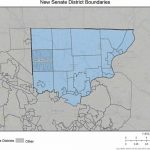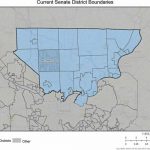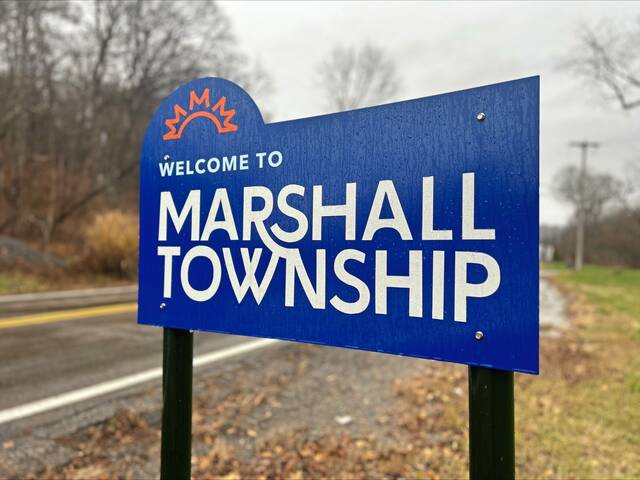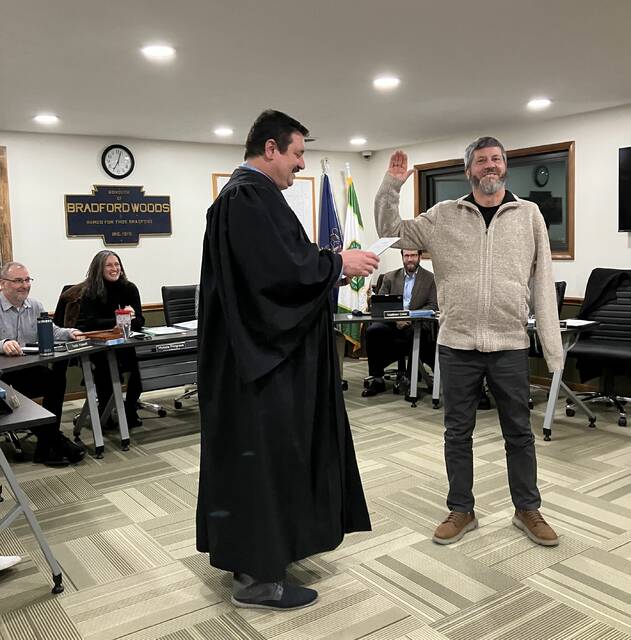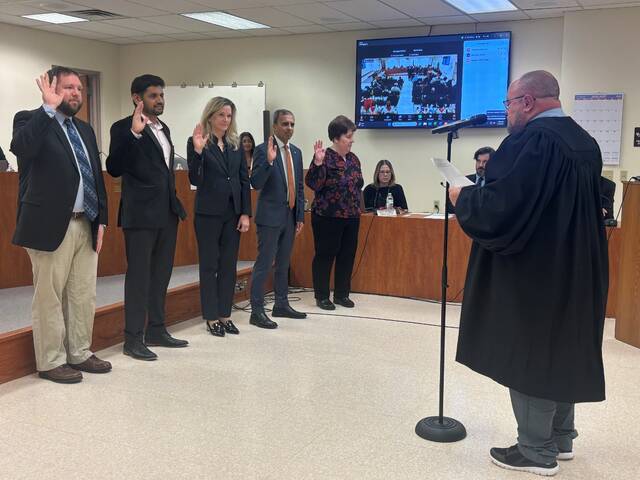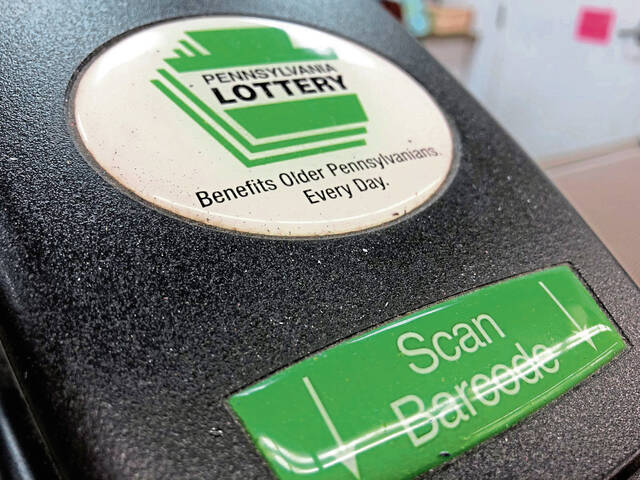McCandless is opposing the preliminary redistricting maps for the Pennsylvania House and Senate that would split McCandless from other municipalities within the North Allegheny School District.
The preliminary plan was adopted by the Pennsylvania Legislative Reapportionment Commission.
Robert Grimm, town manager for McCandless, sent a letter on behalf of council and citizens of the township, officially opposing the proposed maps. The letter is posted on the township website.
Under the Pennsylvania Constitution, the reapportionment process takes place every 10 years to reflect population changes, according to Mark Nordenburg, chair to the Legislative Reapportionment Commission.
Currently, McCandless sits in a single House district, District 28 along with Pine, Bradford Woods, Marshall and Franklin Park.
In the proposed House map, five wards of McCandless go into District 30 with Hampton, Richland, and West Deer townships. The remaining two would stay in District 28 with Pine, Bradford Woods, Marshall, Franklin Park, but also Ohio, Sewickley Hills, Sewickley Heights, Bell Acres, Leet, Leetsdale and Edgeworth.
McCandless is now in Senate District 38 with Bradford Woods, Marshall, and Franklin Park, as well as with a number of surrounding municipalities.
In the proposed Senate District 38 map, all of McCandless would stay together, but Bradford Woods, Marshall and Franklin Park would be grouped with communities such as Pine, West View, Ross, Richland, Hampton, Shaler and others.
“Our concerns are not related to partisan politics or a reflection of any particular elected official’s ability to represent the Town. They are quite simply due to the impact these changes will have on our community,” Grimm’s letter stated.
The Constitution divides the state into 50 senatorial and 203 representative districts, “which shall be composed of compact and contiguous territory as nearly equal in population as practicable,” according to Nordenburg.
He noted the importance of the basic principle that exists under both constitutions of the United States and Pennsylvania “that our elections should be conducted in a manner that is consistent with the principle of one person (per) one vote.”
Thus, district lines must be adjusted every 10 years to reflect population changes, he said.
In the past 10 years, there have been two major changes in the population of Pennsylvania.
One has been slow growth in or population losses in the western and northern regions of the state and comparatively fast growth in the southeastern region of the state. The other is a substantial increase in the state’s minority population, he said.
Nordenburg said the state Constitution provides that “[u]nless absolutely necessary no county, city, incorporated town, borough, township or ward shall be divided in forming either a senatorial or representative district.”
Some municipalities need to be split because their population is too large to be put in a single district, he said. For example, this would apply to both Philadelphia and Pittsburgh, which have populations too large for either a senate district or a house district.
In Pennsylvania, redistricting is complicated by the state having more than 2,500 municipalities, the third most in the nation, and its House of Representatives has 203 members, the second most in the nation, he said.
“Inevitably, to draw that many district lines through a state that has so many municipalities, then there are municipal cuts that will need to be made, and the challenge becomes deciding where those cuts should be made. A number of factors can enter into that decision,” he said.
School districts, it should be noted, are not listed in the Constitution as entities that should be protected from cuts. However, many believe they represent “communities of interest” that should be protected from cuts when that is possible, though they do not enjoy the Constitutional priority that has been given to counties, municipalities and wards, Nordenburg said.
As a practical matter, the larger a school district, the more likely it is to be split. That same general rule of thumb probably applies to larger and more heavily populated municipalities, said Nordenburg, who is a graduate of North Allegheny.
The NA school district encompasses 48 square miles. Total enrollment as of last September was 8,483, according to a fall enrollment report.
In his letter, Grimm stated the redistricting “proposal has the potential to fracture the existing connections” among the North Allegheny communities and make it challenging for the township to accomplish transportation goals because of working with multiple legislators.
“This will slow our ability to move forward with major infrastructure projects that we hope to have partnerships with the state to accomplish. Furthermore, the new district lines will create confusion among our residents as to who is representing them,” Grimm said.
“I think you’re really putting North Allegheny in a bad situation when you’re splitting a district. That’s from an educational perspective, not political,” said township Councilmember Dr. Kathleen Roppa.
Several residents also stated concern at a recent January meeting.
Mary Ann Love of McCandless said she hopes the state takes another look at the preliminary map. To avoid any political influence, she suggested “take the redistricting process out of the hands of politicians and replace it with a citizens commission.”
Resident Carolyn Gibbs said the proposed map for the state House district is a big improvement over the current legislative map.
“The new proposed map would make our Commonwealth a more fair place than it has been,” she said.
But it could be further improved, including not splitting the NA school district communities.
Resident Irene Caliendo also was concerned about splitting the township and district.
“The most important thing is to draw a fair map, not a gerrymander map,” she said.
Nordenburg acknowledged the preference among municipal and school board officials is to avoid being split, believing it is better to have a single representative or senator fully committed to the municipality or school district.
“However, there also is another point of view that we have seen in some of the comments submitted to us — that there can be an advantage to having more than one representative or senator who has an official responsibility to represent the municipality or district because it gives that municipality or school district an additional voice in the Capitol,” he said.
State Rep. Rob Mercuri, of the 28th District, said he’s hopeful the commission will take comments from local residents into account when drawing the final state House map.
“Dividing the Town into more than one district may result in a less effective representation of the municipality, its schools, municipal services and its many valued residents. Balancing this continued unity with the growth of District 28 in recent years is challenging but achievable,” he said.
State Sen. Lindsey Williams, of District 38, acknowledged the significant population increase over the last decade, which necessitated the change in district lines to ensure equal representation for all.
“I’m proud of that growth, but as the Democratic Chair of the Education Committee, I’m disappointed to see that the new proposed map splits the North Allegheny School District,” said Williams, adding she would have liked these communities to be kept together, at NASD and across the commonwealth.
The commission has completed the 30-day period for the submission of exceptions, including public hearings to hear testimony from citizens and experts. The deadline to comment was Jan. 18. Nordenburg said they are now reading each of the more than 4,000 written comments received.
Once the comment period was complete, the Commission has 30 days to consider the comments and develop and approve a final plan, he said.






